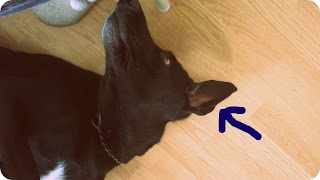This summer I will be doing an 8 week rotation somewhere in New Orleans. I put the VA hospital as my first choice because I want to make sure that I have experience practicing physical therapy in many different settings. If I do get placed at the VA hospital, I plan on telling the people I work with about Serenity Park.
Serenity Park was started by a psychologist's love of veterans and parrots. Dr. Lorin Lindner was working at a VA hospital in California and she found that the veterans had a hard time opening up to her. On a whim, she took them to a parrot sanctuary that she had opened 10 years earlier. The vet's reactions to the birds were incredible.“The next thing I knew, they were down on the ground cuddling the birds and talking baby talk to them,” Dr, Lindner related in an interview.
Using her knowledge of birds and psychology, she convinced the VA hospital to open a parrot sanctuary on the property. Her plan included using the birds in animal assisted therapy for the veterans' psychological needs and the care of the birds as a reintroduction to the skills necessary for reentering the workforce.
The relationship has "taken flight". As a result of their programming, several of the veterans move on to working with animals in some capacity from dog grooming, to veterinary clinics. "One veteran now works for Los Angeles Animal Services and another opened his own animal-based construction company that builds boarding facilities and aviaries", Dr. Lindner reports. The birds have also benefited; having a place with ample space, food choices, and socialization increases the birds' quality of life. Often people will get a parrot without doing research and usually the bird pays for this mistake. Serenity Park is a sanctuary for those birds when their owners no longer want them or can take care of them.
Most parrots are monogamous and therefore take time to bond with a person. Before reading about Serenity Park, I didn't think that parrots could be therapy animals for that reason. Now I see that working with a parrot is a great way to teach about relationship building with a focus on patience. Building relationships takes time, and so does healing. At the end of both, the rewards are great.
*Boomer was relinquished by her previous owners, as were all of the parrots in the education collection at the zoo. A fellow blogger, and former keeper, explains the issues with this process in her post.
Serenity Park was started by a psychologist's love of veterans and parrots. Dr. Lorin Lindner was working at a VA hospital in California and she found that the veterans had a hard time opening up to her. On a whim, she took them to a parrot sanctuary that she had opened 10 years earlier. The vet's reactions to the birds were incredible.“The next thing I knew, they were down on the ground cuddling the birds and talking baby talk to them,” Dr, Lindner related in an interview.
Using her knowledge of birds and psychology, she convinced the VA hospital to open a parrot sanctuary on the property. Her plan included using the birds in animal assisted therapy for the veterans' psychological needs and the care of the birds as a reintroduction to the skills necessary for reentering the workforce.
The relationship has "taken flight". As a result of their programming, several of the veterans move on to working with animals in some capacity from dog grooming, to veterinary clinics. "One veteran now works for Los Angeles Animal Services and another opened his own animal-based construction company that builds boarding facilities and aviaries", Dr. Lindner reports. The birds have also benefited; having a place with ample space, food choices, and socialization increases the birds' quality of life. Often people will get a parrot without doing research and usually the bird pays for this mistake. Serenity Park is a sanctuary for those birds when their owners no longer want them or can take care of them.
 |
| Boomer, a Catalina Macaw that lives at the Audubon Zoo. * Picture taken by Amy Martin |
*Boomer was relinquished by her previous owners, as were all of the parrots in the education collection at the zoo. A fellow blogger, and former keeper, explains the issues with this process in her post.





